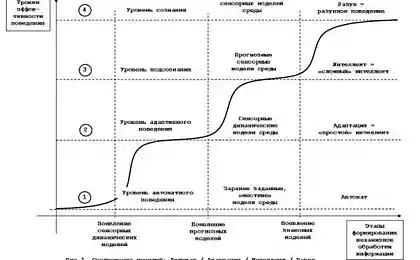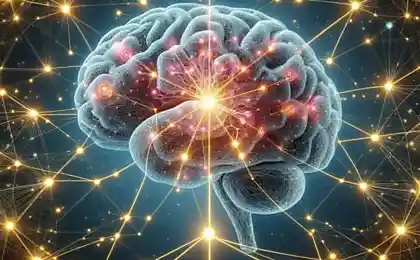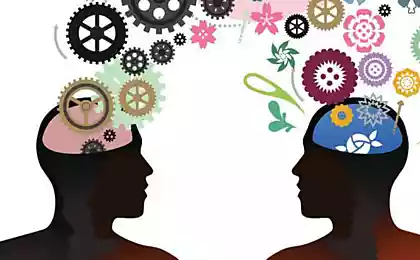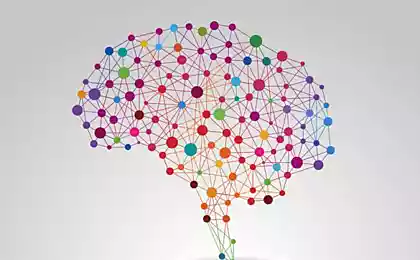1323
Art in artificial intelligence
Questions of art are closely related to psychology and human perception of various signals, whether the sound frequency or color spectrum. In this context, the question of creating a system of artificial intelligence dealing with works of art or synthesizing an extremely difficult task that borders on the impossible but it's not quite true. To create such a system is necessary to examine in depth the physical and emotional human perception of various external factors. This may seem like a fairly simple task, given that most of the questions individually perception studied in detail by experts in the relevant fields of the scientific world. But do not forget that our world is designed so that tying two well-known element, we get a third, not similar to any of the previous ones, a unique pattern that does not behave as expected. This is confirmed by a simple example of a school of chemistry when we add a drop of potassium permanganate glycerol, and the mixture was illuminated.
Painting
What happens when a person looks at the big picture? This is the main question, the answer to which will enable us to get closer to the creation of an artificial intelligence system that will be able to paint.
The first factor in the perception and mood is a range of colors, or rather the color spectrum. In order to define the concept of color, we have enough of the wave theory. Thus, light is light with a certain wavelength. The spectrum of the visible light - a light with wavelengths in the range from about 400 to 700 nanometers. All radiation lying outside this range, the human eye is no longer perceived.
The second factor is the simple images that complement the range. Undoubtedly, if a person sees to draw an apple, he must feel the smell and taste can feel it if he tried an apple before.
The third factor I distinguish complex images or "templates" that a person has accumulated over a lifetime. After all, one can not deny the fact that a person who remembers the painting "Girl with Peaches", be sure to imagine this picture, if he sees exactly the same peach, as any other picture with similar images.
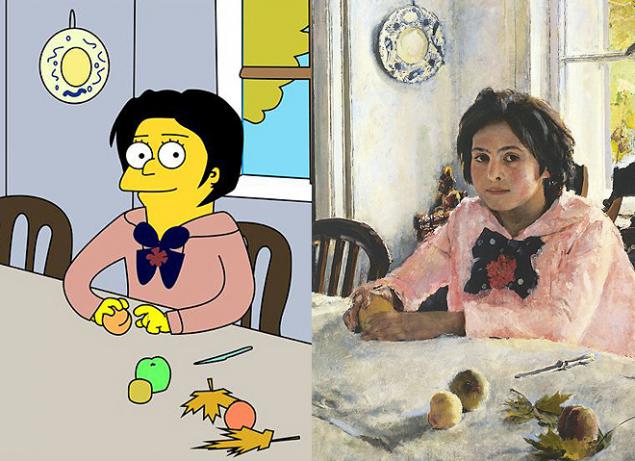
I would like to clarify that a person evaluates different material things and images. Chances are, if it will hold in your hand a peach, then the painting is still not hesitate.
Let us consider the impact on human perception of each of the three factors.
The first factor
How we perceive color
Color - This sensor impression, which occurs when light stimuli of a certain wave length (the electromagnetic radiation in the range from about 180 to 780 nm, called the spectrum of light) to enter the pupil receptors. From there on neural networks this impulse is transmitted to the brain and is perceived as color. Color perception of surrounding objects is always subjective, since it only occurs in the brain of the beholder. In a physical sense objects have no color, we only perceive them as.
Physiological aspects of color perception is that during the evolution of the rear part of the pupil of the human photoreceptors appeared. When exposed to electromagnetic wavelengths of between 380 and 780 nm, they are capable of generating physiological (nervous) signal. There are two types of photoreceptors: rods and cones. Sticks only recognize the contrast of black and white, very light sensitivity and enable vision at dusk and in the dark. Cones are responsible for color perception. There are three types of cones, which perceive short (blue), medium (green) and long wavelengths (red) color light. Each combination of light beams incident on the retina in a certain way excites the three types of cones, and give an impression of the corresponding color. Nerve impulses that arise in the photoreceptors, are transmitted along the nerve networks in the brain (transduction), which eventually colors begin to be perceived consciously.
Psychology of color
Numerous psychological and sociological research on the subject as a whole give a uniform picture. On the one hand, the emotional impact of color due to the properties of universal objects (blue sky, red blood, the yellow sun, green grass, etc.), On the other hand - the influence of culture, and it does not matter whether we realize it or not impact. In everyday life, with the symbols of colors are dealing not only painters, designers, graphics and other representatives of the artistic professions. The emotional impact of color is reflected, for example, in the language - are all familiar with the expression "like a red rag to a bull", "men in white coats", "blacken with rage" and many others.
Description research h4> In the study of color by one group of scientists conducted two experiments. The first of these subjects (10 men and 10 women) showed differently colored slides and recorded neuronal activity in the perception of a particular color.
Prior to the beginning of conscious perception (about 200-300 ms), green and blue produce stronger neuronal excitability in the frontal lobe of the brain than the red. Red, in turn, over the same time period activates neuronal activity in the occipital and temporal areas, indicating that the strong emotional impact of color. Scientifically proven that the pulses of visual stimuli, passing through the occipital and temporal areas, immediately get into the limbic system (emotions location). Faithfulness sayings "Blue - the color of reason, red - the color of passion" is now proved in terms of neurophysiology. The colors and emotions. Influence of color on the emotional perception of the world is due to the fact that the peak of neural activity in color perception accounts for 50-150 ms from the beginning of the impact of the stimulus (the period of the subconscious perception). Thus, the colors have a huge impact on cognitive (consciously living) processes as well as during their subconscious processing they cause the peak of neuronal activity. The impact of colors on conscious perception. With conscious perception (which begins after 300 ms) color affect neuronal activity in very different ways. In other words, the experience gained in the process sociologization subject, as well as its individual color preferences, personality and motivation structure have a very big impact on the perception of colors.
Exposure to certain colors cause similar reactions in different cultures. Thus, the red color affects more intense than blue and green, bright contrasting color combination - more than dim. If, for example, facial expressions (biological response to a stimulus) is global, talk about the existence of common reactions to a variety of colors wrong: too strongly influenced by cultural and social associations. The color and the floor. Interesting is the detailed study and comparison of neurophysiological responses in the time period up to 200 ms (subliminal perception) in men and women. It was found that neural activity in color perception is higher among women than men. Since this phenomenon is observed during the subconscious perception, it can be assumed that the female emotional respond to all colors. Men, on the contrary, have a greater impact black and white images.
The second factor
The second important factor, as previously described, are simple visualizations. For example, sweets image corresponding colors may cause not only a feeling of appetite, but also affect mood.
Scientists rarely give value directly, but it is proved that if you hang in the kitchen still life, then the person will get the feeling of appetite, and if the room hangs a painting of colors, there is a feeling that is barely audible smell these flowers.
These simple images are laid in humans since childhood and supplemented throughout life.
This factor, along with the first factor is always taken into account when creating artificial intelligence systems, synthesizing images but do not take into account not least the third factor.
Music
The first factor
In order to explain the mechanism of the effects of music on the human body, it is necessary to consider how people perceive sound. Sound vibrations are perceived by hearing or transmitting the information to specific areas of the brain, or the vibrations of a certain frequency directly affect the functioning of individual organs and body as a whole. In the first case, the brain, depending on the received information signals sent by an originating under its influence. In the second case, the mechanism of action the next sound vibrations. Each body works in its special mode, biorhythms work any healthy body lie in a certain range of frequencies common to the vast majority of people. For example, the heart rate and smooth muscle organs close to 7 Hz. Alpha mode of brain function - 4 - 6 Hz. Beta Mode - 20 - 30 Hz. In case of coincidence or approximation frequency sound vibrations to the frequency of biorhythms of an organ arises all the well-known phenomenon of resonance (gain fluctuations) or antiresonance (dampening). There are also cases of so-called partial resonance (overlapping vibrations).
But be that as it may, the body begins to work in an unusual and disharmonious to a rhythm that can lead to disease of the body as well as the whole organism. A person hears the sound vibrations from an average frequency of 20 Hz to 20 kHz. Above this range begins area of ultrasonic vibrations, but a direct effect on the body have mainly fluctuations from 2 to 10 Hz.
So, the music has an impact in several directions simultaneously. From the analysis of a number of psycho-emotional we allow ourselves to abstain, because this work requires considerable time and a separate large study involving professional psychologists and psychotherapists. The subject of our further discussions will be exclusively low frequency rhythmic oscillations.
They appear in the rhythm (or rate) of music, that is, the number of strokes (strokes) per minute. Thus, the rhythm of the waltz is about 50-80 beats per minute, in other words, about 1 Hz.
Music is designed for relaxation and meditation, has a much slower rate. Rock 'n' Roll and related musical forms have about 120 beats per minute, which is about 2 Hz. However, recently more and more common musical direction where bpm rate reaches 240, i.e. close to 4Hz. Figuratively speaking, it is - a direct hit directly on the brain.
The second factor
For simple sound association exists, the term "perception of complex sounds.
Perception of complex sounds - the process of constructing the auditory image - based sounds with complex spectral and rhythmic composition. Complex sounds have different sources, whereby the fore or that their symptoms.
First of all the structural features of the acoustic spectrum qualify as sounds of different quality (voiced and voiceless, soft and sharp, low or high). Many of the sounds of nature (such as the rustle of leaves, the lapping of the water, twigs crackling, crashing collapse, heartbeat) are single repetitive pulses, where the frequency and regularity of repetition are significant signs of orientation and building adequate image perception. Speech sounds are analyzed not only for its value, but also - on the basis of the characteristics of intonation, volume, delay, change of pace - by filling expressive. In the perception of musical sounds are the leading features that form its musical and sonic fabric, such as high-rise ladogarmonicheskie relations rhythmic canvas.
The third factor
Neither artificial intelligence system does not account for a third equally important, and perhaps more important factor - the value template of human memory. After all, no doubt, in all that relates to the art, for awareness of the image, each person uses their own patterns of the spectral images. So it turns out that we all think in images and templates? Yes, that's in and out.
For each person a set of template visual-spectral images of your own, but there are those that are common to many people. Those are specially trained, have a lot more Pattern-spectral images than those who are not specifically trained. At its core, school, make a deep review of the images (pictures and paintings), with detailed explanations, only patterns presented to his listeners.
As for the music, the music school - it is nothing like the factory pattern. The more a person learns, the more it absorbs templates. In the School of Music to add another sound image and visual. This explains the fact that children are sitting on "the musical literature" do not realize that they need to see, but hard studying, they do not understand it themselves, absorb template. After just a few years, these same children will not only be able to tell that a person must "see" when listening to a particular classical works, but also they really feel it.
All this means that the third factor - it's some combination of the second factor to the thematic implication of that is put into a work of art by the author. This subtext, as is known, is not always properly recognized, and each person has his own set of psycho-emotional and semantic associations of the same image.
Source: geektimes.ru/post/246180/
Painting
What happens when a person looks at the big picture? This is the main question, the answer to which will enable us to get closer to the creation of an artificial intelligence system that will be able to paint.
The first factor in the perception and mood is a range of colors, or rather the color spectrum. In order to define the concept of color, we have enough of the wave theory. Thus, light is light with a certain wavelength. The spectrum of the visible light - a light with wavelengths in the range from about 400 to 700 nanometers. All radiation lying outside this range, the human eye is no longer perceived.
The second factor is the simple images that complement the range. Undoubtedly, if a person sees to draw an apple, he must feel the smell and taste can feel it if he tried an apple before.
The third factor I distinguish complex images or "templates" that a person has accumulated over a lifetime. After all, one can not deny the fact that a person who remembers the painting "Girl with Peaches", be sure to imagine this picture, if he sees exactly the same peach, as any other picture with similar images.

I would like to clarify that a person evaluates different material things and images. Chances are, if it will hold in your hand a peach, then the painting is still not hesitate.
Let us consider the impact on human perception of each of the three factors.
The first factor
How we perceive color
Color - This sensor impression, which occurs when light stimuli of a certain wave length (the electromagnetic radiation in the range from about 180 to 780 nm, called the spectrum of light) to enter the pupil receptors. From there on neural networks this impulse is transmitted to the brain and is perceived as color. Color perception of surrounding objects is always subjective, since it only occurs in the brain of the beholder. In a physical sense objects have no color, we only perceive them as.
Physiological aspects of color perception is that during the evolution of the rear part of the pupil of the human photoreceptors appeared. When exposed to electromagnetic wavelengths of between 380 and 780 nm, they are capable of generating physiological (nervous) signal. There are two types of photoreceptors: rods and cones. Sticks only recognize the contrast of black and white, very light sensitivity and enable vision at dusk and in the dark. Cones are responsible for color perception. There are three types of cones, which perceive short (blue), medium (green) and long wavelengths (red) color light. Each combination of light beams incident on the retina in a certain way excites the three types of cones, and give an impression of the corresponding color. Nerve impulses that arise in the photoreceptors, are transmitted along the nerve networks in the brain (transduction), which eventually colors begin to be perceived consciously.
Psychology of color
Numerous psychological and sociological research on the subject as a whole give a uniform picture. On the one hand, the emotional impact of color due to the properties of universal objects (blue sky, red blood, the yellow sun, green grass, etc.), On the other hand - the influence of culture, and it does not matter whether we realize it or not impact. In everyday life, with the symbols of colors are dealing not only painters, designers, graphics and other representatives of the artistic professions. The emotional impact of color is reflected, for example, in the language - are all familiar with the expression "like a red rag to a bull", "men in white coats", "blacken with rage" and many others.
Description research h4> In the study of color by one group of scientists conducted two experiments. The first of these subjects (10 men and 10 women) showed differently colored slides and recorded neuronal activity in the perception of a particular color.
In the second experiment, participants were shown 30 pictures depicting kissing couples. Among these pictures were monochrome (painted in different colors - red, yellow, blue, green, black), and color. Each image appearing in six colors (in random order, for one second). Subjects were instructed: "You will be shown pictures of kissing couples. Part pictures - portraits of ordinary people, part - footage from the film. Please rate how you feel, strong feelings of the people in the photograph (on a scale of 1 to 5). "
In the experiment, we specifically asked "to assess the feelings" of people in the photos to the attention of the experiment was not designed nor color, nor on their subjective attitude. Investigated how different shades of colors affect emotional evaluation of a particular photograph.
The study h4>
Color and transduction. Transduction process ("translation" of the color stimulus into the language of the brain) in the perception of different colors takes different amounts of time and is different from the intensity of neuronal activity in the relevant areas of the brain, depending on what color is processed.Prior to the beginning of conscious perception (about 200-300 ms), green and blue produce stronger neuronal excitability in the frontal lobe of the brain than the red. Red, in turn, over the same time period activates neuronal activity in the occipital and temporal areas, indicating that the strong emotional impact of color. Scientifically proven that the pulses of visual stimuli, passing through the occipital and temporal areas, immediately get into the limbic system (emotions location). Faithfulness sayings "Blue - the color of reason, red - the color of passion" is now proved in terms of neurophysiology. The colors and emotions. Influence of color on the emotional perception of the world is due to the fact that the peak of neural activity in color perception accounts for 50-150 ms from the beginning of the impact of the stimulus (the period of the subconscious perception). Thus, the colors have a huge impact on cognitive (consciously living) processes as well as during their subconscious processing they cause the peak of neuronal activity. The impact of colors on conscious perception. With conscious perception (which begins after 300 ms) color affect neuronal activity in very different ways. In other words, the experience gained in the process sociologization subject, as well as its individual color preferences, personality and motivation structure have a very big impact on the perception of colors.
Exposure to certain colors cause similar reactions in different cultures. Thus, the red color affects more intense than blue and green, bright contrasting color combination - more than dim. If, for example, facial expressions (biological response to a stimulus) is global, talk about the existence of common reactions to a variety of colors wrong: too strongly influenced by cultural and social associations. The color and the floor. Interesting is the detailed study and comparison of neurophysiological responses in the time period up to 200 ms (subliminal perception) in men and women. It was found that neural activity in color perception is higher among women than men. Since this phenomenon is observed during the subconscious perception, it can be assumed that the female emotional respond to all colors. Men, on the contrary, have a greater impact black and white images.
The second factor
The second important factor, as previously described, are simple visualizations. For example, sweets image corresponding colors may cause not only a feeling of appetite, but also affect mood.
Scientists rarely give value directly, but it is proved that if you hang in the kitchen still life, then the person will get the feeling of appetite, and if the room hangs a painting of colors, there is a feeling that is barely audible smell these flowers.
These simple images are laid in humans since childhood and supplemented throughout life.
This factor, along with the first factor is always taken into account when creating artificial intelligence systems, synthesizing images but do not take into account not least the third factor.
Music
The first factor
In order to explain the mechanism of the effects of music on the human body, it is necessary to consider how people perceive sound. Sound vibrations are perceived by hearing or transmitting the information to specific areas of the brain, or the vibrations of a certain frequency directly affect the functioning of individual organs and body as a whole. In the first case, the brain, depending on the received information signals sent by an originating under its influence. In the second case, the mechanism of action the next sound vibrations. Each body works in its special mode, biorhythms work any healthy body lie in a certain range of frequencies common to the vast majority of people. For example, the heart rate and smooth muscle organs close to 7 Hz. Alpha mode of brain function - 4 - 6 Hz. Beta Mode - 20 - 30 Hz. In case of coincidence or approximation frequency sound vibrations to the frequency of biorhythms of an organ arises all the well-known phenomenon of resonance (gain fluctuations) or antiresonance (dampening). There are also cases of so-called partial resonance (overlapping vibrations).
But be that as it may, the body begins to work in an unusual and disharmonious to a rhythm that can lead to disease of the body as well as the whole organism. A person hears the sound vibrations from an average frequency of 20 Hz to 20 kHz. Above this range begins area of ultrasonic vibrations, but a direct effect on the body have mainly fluctuations from 2 to 10 Hz.
So, the music has an impact in several directions simultaneously. From the analysis of a number of psycho-emotional we allow ourselves to abstain, because this work requires considerable time and a separate large study involving professional psychologists and psychotherapists. The subject of our further discussions will be exclusively low frequency rhythmic oscillations.
They appear in the rhythm (or rate) of music, that is, the number of strokes (strokes) per minute. Thus, the rhythm of the waltz is about 50-80 beats per minute, in other words, about 1 Hz.
Music is designed for relaxation and meditation, has a much slower rate. Rock 'n' Roll and related musical forms have about 120 beats per minute, which is about 2 Hz. However, recently more and more common musical direction where bpm rate reaches 240, i.e. close to 4Hz. Figuratively speaking, it is - a direct hit directly on the brain.
The second factor
For simple sound association exists, the term "perception of complex sounds.
Perception of complex sounds - the process of constructing the auditory image - based sounds with complex spectral and rhythmic composition. Complex sounds have different sources, whereby the fore or that their symptoms.
First of all the structural features of the acoustic spectrum qualify as sounds of different quality (voiced and voiceless, soft and sharp, low or high). Many of the sounds of nature (such as the rustle of leaves, the lapping of the water, twigs crackling, crashing collapse, heartbeat) are single repetitive pulses, where the frequency and regularity of repetition are significant signs of orientation and building adequate image perception. Speech sounds are analyzed not only for its value, but also - on the basis of the characteristics of intonation, volume, delay, change of pace - by filling expressive. In the perception of musical sounds are the leading features that form its musical and sonic fabric, such as high-rise ladogarmonicheskie relations rhythmic canvas.
The third factor
Neither artificial intelligence system does not account for a third equally important, and perhaps more important factor - the value template of human memory. After all, no doubt, in all that relates to the art, for awareness of the image, each person uses their own patterns of the spectral images. So it turns out that we all think in images and templates? Yes, that's in and out.
For each person a set of template visual-spectral images of your own, but there are those that are common to many people. Those are specially trained, have a lot more Pattern-spectral images than those who are not specifically trained. At its core, school, make a deep review of the images (pictures and paintings), with detailed explanations, only patterns presented to his listeners.
As for the music, the music school - it is nothing like the factory pattern. The more a person learns, the more it absorbs templates. In the School of Music to add another sound image and visual. This explains the fact that children are sitting on "the musical literature" do not realize that they need to see, but hard studying, they do not understand it themselves, absorb template. After just a few years, these same children will not only be able to tell that a person must "see" when listening to a particular classical works, but also they really feel it.
All this means that the third factor - it's some combination of the second factor to the thematic implication of that is put into a work of art by the author. This subtext, as is known, is not always properly recognized, and each person has his own set of psycho-emotional and semantic associations of the same image.
Source: geektimes.ru/post/246180/



